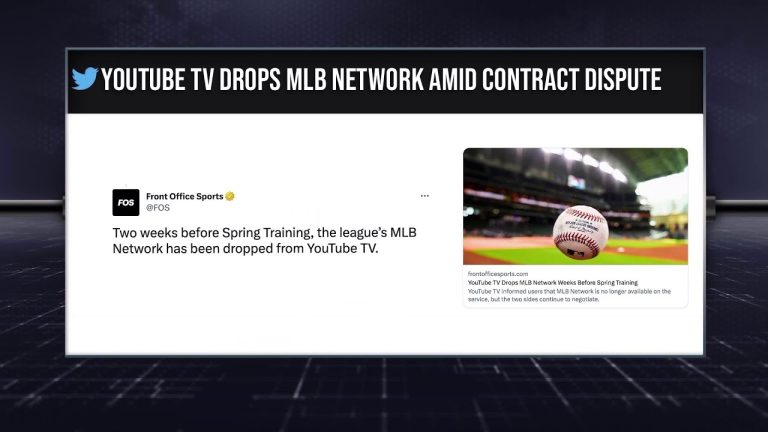
Contract disputes in Major League Baseball (MLB) have long been a contentious issue, creating headlines and fueling debates among fans and pundits alike. From multi-million dollar deals gone sour to heated negotiations between players and team owners, these conflicts often reveal the complex and high-stakes nature of professional sports contracts. In this article, we delve into the world of contract disputes in MLB, exploring the key factors that contribute to these conflicts and the potential implications for players, teams, and the overall dynamics of the game.
What is the only thing that has ever happened to an MLB contract?
In a rare occurrence, an MLB contract was voided in 1987, making headlines across the league. The San Diego Padres took the unprecedented step of nullifying pitcher Lamarr Hoyt’s contract due to his involvement in serious drug charges. Hoyt’s conviction for drug-related offenses, such as cocaine distribution and drug smuggling, left the team with no choice but to sever ties with him.
This groundbreaking decision by the Padres showcased their commitment to maintaining a clean and drug-free environment within the organization. By voiding Hoyt’s contract, they sent a strong message to players and fans alike that such behavior would not be tolerated. This bold move demonstrated the team’s dedication to upholding the integrity and reputation of Major League Baseball.
The voiding of an MLB contract, as exemplified by the San Diego Padres’ actions in 1987, serves as a reminder of the consequences that can follow serious off-field misconduct. It highlights the importance of players upholding their responsibilities both on and off the field. This unprecedented decision not only impacted Hoyt’s career but also served as a precedent for future instances where teams are forced to take swift action to protect the integrity of the game.
How do MLB contracts function?
MLB contracts operate on the principle of guaranteeing the full amount of money promised to players with Major League contracts. This means that once a player signs a Major League contract, they are assured of receiving the entire sum mentioned in the agreement. In contrast, players with Minor League contracts face a different scenario as they must prove their worth during Spring Training or through an in-season promotion to secure a guaranteed contract. This distinction ensures that players in the Major League are financially secure while also providing opportunities for aspiring talents to earn a spot on the roster.
In the world of MLB contracts, assurance and performance go hand in hand. When players secure Major League contracts, they can rest easy knowing that the full amount of money promised to them will be received without any uncertainty. However, for those signed to Minor League contracts, the journey to a guaranteed contract is more challenging. They must showcase their skills either during Spring Training or through an in-season promotion, proving their worth to earn a spot on the roster and secure a guaranteed contract. This system strikes a balance between providing financial security to established players while offering opportunities for emerging talents to prove themselves in order to achieve the same level of assurance.
Can a baseball contract be broken?
Breaking a baseball contract is not without consequences. If a player is cut on or before the 16th day of Spring Training, they are entitled to 30 days’ termination pay, calculated based on their agreed-upon salary. However, if a player is cut between the 16th day and the end of Spring Training, the owed termination pay increases to 45 days. These clear guidelines ensure that players are compensated fairly, while also emphasizing the importance of commitment and performance in the world of professional baseball.
Navigating MLB Contract Disputes: Your Roadmap to Resolution
Navigating MLB Contract Disputes: Your Roadmap to Resolution
When it comes to MLB contract disputes, a clear roadmap is essential for swift resolution. With millions of dollars on the line, both players and teams need to navigate this complex terrain efficiently. By employing skilled negotiators and legal experts, parties can ensure a fair and satisfactory outcome. Whether it’s a disagreement over player salaries or contract terms, having a well-defined roadmap can help avoid unnecessary delays and costly litigation, ultimately leading to a resolution that benefits all parties involved.
In the high-stakes world of MLB contract disputes, strategic planning is crucial for successful resolution. Parties must carefully analyze the intricacies of the contracts, identify potential loopholes, and develop a strong negotiation strategy. With expert guidance, players can secure fair compensation, while teams can protect their interests and maintain financial stability. By following this roadmap to resolution, parties can navigate the complexities of MLB contract disputes with confidence, reaching mutually beneficial agreements and ensuring a level playing field for all involved.
Mastering MLB Contract Disputes: Strategies for Swift Settlement
Mastering MLB Contract Disputes: Strategies for Swift Settlement
In the high stakes world of Major League Baseball (MLB) contract disputes, swift settlement is crucial. To master these complex negotiations, teams and players must employ strategies that are both clean and concise. By focusing on clear communication, understanding the value of compromise, and utilizing expert legal counsel, parties can navigate these disputes with efficiency and effectiveness. Through a combination of concise arguments and eye-catching proposals, MLB contract disputes can be resolved swiftly, ensuring that the focus remains on the game rather than lengthy legal battles.
In the complex world of Major League Baseball, contract disputes have become an unavoidable reality. As players and teams strive for fair and equitable agreements, disagreements are bound to arise. However, these conflicts serve as a reminder of the ever-evolving nature of the sport and the need for continuous negotiation and compromise. By finding common ground and fostering open lines of communication, both players and teams can ensure a harmonious future that upholds the integrity and competitiveness of America’s national pastime.
